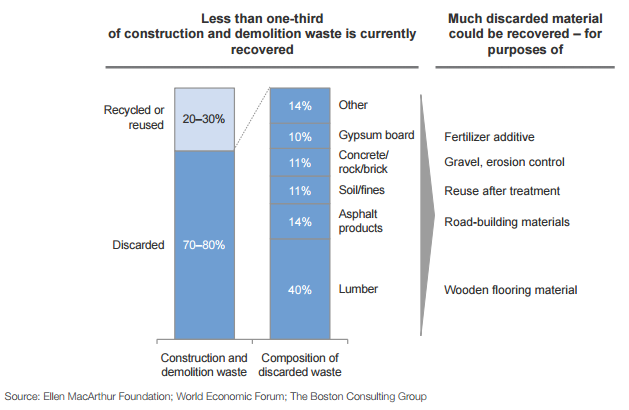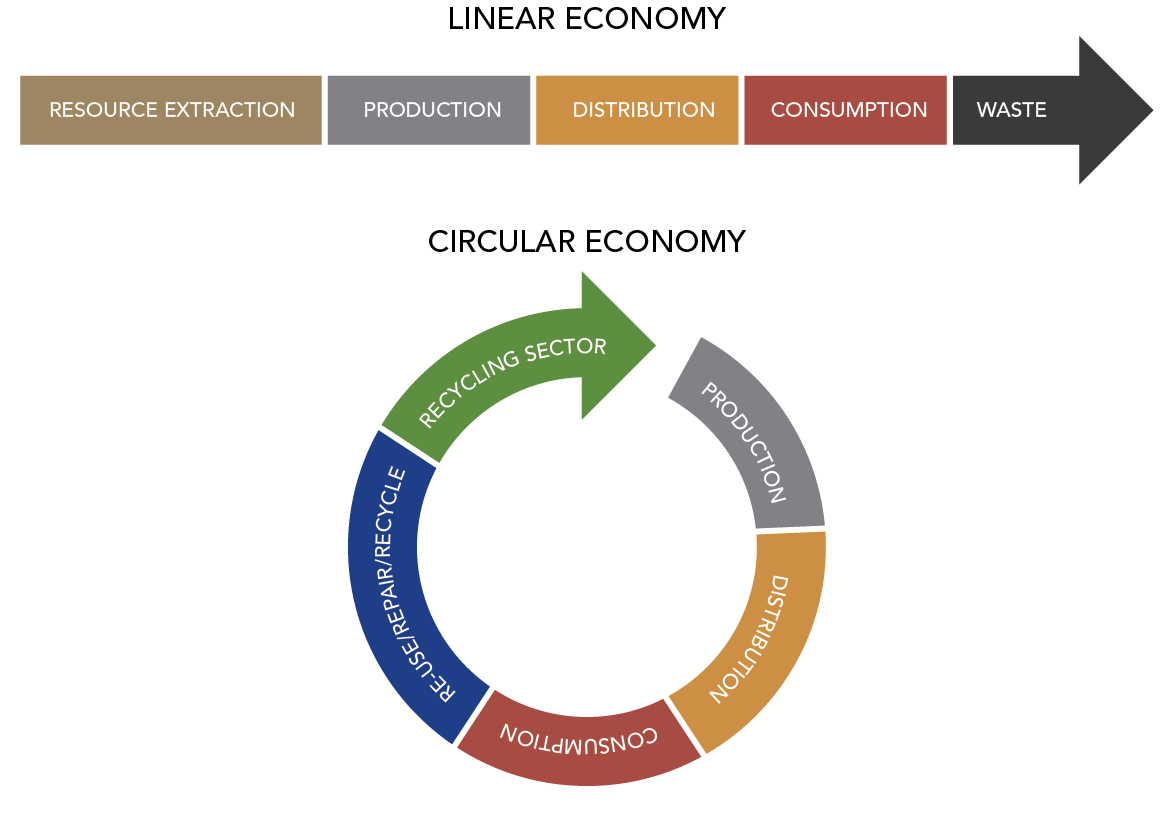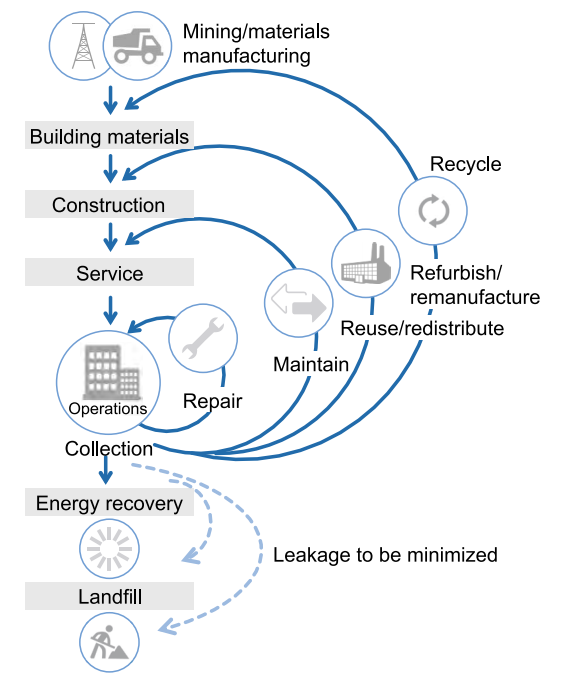Transforming the world number one consumer of raw materials with the circular economy.
Contents |
[edit] Introduction
The construction industry’s appetite for raw materials is vast; it is the world’s largest consumer of them and accounts for 25-40% of global carbon emissions.
Yet very little gets reused or recycled. The World Economic Forum’s new report Shaping the Future of Construction found that only a fraction of construction waste gets recycled. Instead, billions of tonnes of materials that could be used elsewhere are being dumped.
With urban areas growing in population by 200,000 people per day, construction is going to continue to have a significant impact on the way the world’s resources are used. But how do we change the way the industry deals with waste?
[edit] A missed opportunity
The World Economic Forum report found that less than a third of all construction and demolition waste is recovered and reused.
That’s despite the fact that these materials could be put to a number of uses. From road-building to flooring, so much of what is currently being discarded could be re-purposed and recycled.
Construction and Demolition Waste:
[edit] Building a new model
The report highlights the huge benefits that can come from change in the construction industry.
The industry consumes about 50% of global steel production and, each year, 3 billion tonnes of raw materials are used to manufacture building products worldwide.
In the United States, about 40% of solid waste derives from construction and demolition.
Such waste involves a significant loss of valuable minerals, metals and organic materials. With such quantities involved, even small improvements in the way the construction industry works will have significant impacts on sustainability.
By focusing on reusing and recycling materials, the industry could see huge efficiency gains.
[edit] The circular economy
The traditional linear economy uses a 'take, make, dispose' economic model which relies on large quantities of cheap, easily accessible materials and energy. It is not a sustainable model and many believe it is a now reaching its limits.
A circular economy aims to be a viable alternative that reuses where possible and designs products that can be 'made to be made again' while powering the system with renewable energy.
[Image: Sustainable Brands]
Applying this principle to the construction industry could bring extremely cost-effective benefits. The World Economic Forum’s report points out that by harnessing the capacity of the building sector, many countries could cut emission rates cost effectively and achieve energy savings of more than 30%, according to the United Nations Environment Programme.
The target set by the United Kingdom’s construction industry for 2025 is a full 50% reduction of today’s level of greenhouse gas emissions in the overall built environment.
Circular Economy Principles in the Construction Value Chain:
[Image: Ellen MacArthur Foundation; World Economic Forum; Boston Consulting Group]
The report shows that by adopting circular economy principles and sharing knowledge within the industry, companies can bring about transformative change. With the help of government – both as regulator and infrastructure customer – this change can be supported and encouraged.
Small changes in such a vast industry have extraordinary potential and many of these changes are already within reach. All that is missing is the will to bring about the necessary transformation.
Written by Keith Breene, Formative Content, World Economic Forum
This article was also published on the Future of Construction Knowledge Sharing Platform and the WEF Agenda Blog.
--Future of Construction 09:44, 19 Jun 2017 (BST)
[edit] Related articles on Designing Buildings Wiki
- 5 things leaders can do to create a truly circular economy.
- A social, circular economy.
- Circular economy.
- Circular economy in the built environment.
- Cradle to cradle product registry system.
- End of life potential.
- Impact of the sharing economy on construction craft labour and equipment markets.
- Managing packaging waste streams.
- Recyclable construction materials.
- Wood and the Circular Economy.
About the wiki
Anyone is welcome to use and contribute to the wiki in different ways.
[edit] Engaging with the wiki
You can:
- Contribute to existing articles
- Create articles
- Share articles through social media and other channels
- Contact the CIRCuIT project to let us know what you think and how we can improve
[edit] Add your own content
To contribute to or create an article, you can follow these steps:
- Register as a user
- Read through the editorial policy and guidance on writing and contributing to articles
- See the detailed help page on tips on writing wiki articles
- Try editing a test article
- If editing an article, select 'Edit this article' underneath the article title
- If creating a new article, select 'Create an article'. In the 'Select categories' area, expand the 'Industry context' list and tag 'Circular economy' to add your article to this wiki
[edit] Who is this wiki for?
The articles contain information on implementing circular economy approaches in construction that could be relevant to:
- Architects
- Construction contractors
- Designers
- Developers, owners, investors
- Engineers
- Landowners
- Manufacturers and supplier
- Universities and research
- Urban planners
[edit] About CIRCuIT
The Circular Economy wiki is supported by the Circular Construction in Regenerative Cities (CIRCuIT) project, which is funded by the European Union's Horizon 2020 research and innovation programme. CIRCuIT is a collaborative project involving 31 ambitious partners across the entire built environment chain in Copenhagen, Hamburg, Helsinki Region and Greater London. Through a series of demonstrations, case studies, events and dissemination activities, the project will showcase how circular construction practices can be scaled and replicated across Europe to enable sustainable building in cities and the transition to a circular economy on a wider scale.












Comments
Please can you site sources used for this article? This would make it a lot easier to do further reading, and to verify the facts in the article.
Cheers